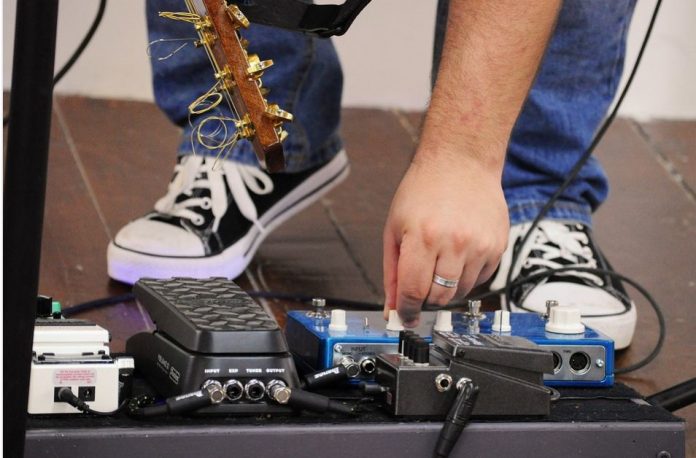A guitar pedal is a delicate subject and not the easiest thing on earth to deal with. If you are a guitar pro, then no problem, you would probably know what to get for yourself.
But then why would you be reading this. So I guess it is safe to assume that you aren’t too well acquainted with guitar pedals and their specialties.
Let me first go quickly through the basic details of a guitar pedal, what they do and what they let you do.
This is, of course, something that many American teenagers probably already know. The guitar, being the most popular instrument ever on the face of the earth, hardly harbors any deep, dark secret.
A pedal is an effects-giving enhancement that you can add to the body of the guitar. And you must also remember that being an electronic add on, it can only go with a semi-acoustic or solid body guitars.
A guitar that does not have an electronic pick up will be completely unsuitable for use with pedals.
Sound effects come in mainly four varieties: there are distortion effects, dynamic effects, pitch modulations, and reverb, also known as a delay.
A variation of these four basic sound effect types is all that makes each of your guitar effects pedals. These are the basic building blocks with which to create your intended sound.
Nowadays, the effects systems that come with your pedal have gone so high end that you might be able to play your guitar with a number of different effects piled one on top of the other without any real difficulty.
But of course, that is not a worthwhile exercise. It is always better to play with your heart, and not depend too much on a gizmo.
It is true that if you are prepared to shell out some serious dough, you can probably achieve quite the kind of effect that your guru regularly achieves on the stage. But will the sounds really be the same?
The trick is not to get carried away with the possibilities of your pedal, but rather concentrate on your true music.
That is why a lot of people, even in this age of hi-tech musical accessories, prefer to play with basic distortions rather than all that the sound designers provide them with, in the form of the formidable devices known as guitar pedals.
Among the effects which you can get in a guitar, the pedal is reverb and delay, pitch modulation, and modeling effects.
This last is a nice innovation that can actually reproduce the exact tonal quality of vintage guitars, acoustic instruments, and also the hallmark tones and timbres of the instruments played by the all-time guitar greats, like Hendrix or Clapton or B.B.King.
Therefore, with one of these, you can fancy yourself to be a guitar guru, and you can immediately start making sounds like your heroes guitar did.
Ultimately the choice is of course yours, but try not to be swayed too much by the glitter of high technology.
Use some common sense and buy only those pedals that go with your style, and avoid those that are merely striking or surprising, because after you have finished playing with them, you’ll find that they are good for little more than gathering dust in a corner.

